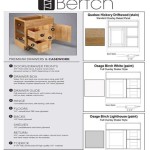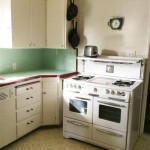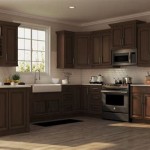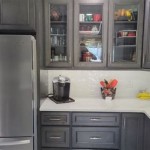KraftMaid Kitchen Base Cabinet Sizes: A Comprehensive Guide
KraftMaid is a prominent manufacturer of kitchen cabinetry, offering a wide range of options to suit various design styles and functional needs. Understanding the available base cabinet sizes is crucial for planning a kitchen remodel or new construction project. Proper size selection impacts storage capacity, workflow efficiency, and overall aesthetic appeal. This article provides a detailed overview of KraftMaid kitchen base cabinet sizes, exploring standard dimensions, factors influencing size selection, and specific cabinet types.
Base cabinets form the foundation of most kitchen designs, providing a solid base for countertops and housing essential appliances and storage solutions. KraftMaid offers base cabinets in incremental widths, depths, and heights, allowing for significant customization. These cabinets are typically installed along the floor and support the weight of the countertop, sink, and frequently used kitchen items.
Standard Base Cabinet Dimensions
KraftMaid base cabinets adhere to industry-standard dimensions, fostering compatibility with various countertop materials, appliances, and design layouts. While customization is possible, understanding these standards is a vital starting point for any kitchen design project. The most crucial dimensions to consider are width, depth, and height.
Width: Base cabinet widths typically range from 9 inches to 48 inches, increasing in 3-inch increments. Common widths include 9", 12", 15", 18", 21", 24", 27", 30", 33", 36", 39", 42", 45", and 48". Narrower cabinets (9-18 inches) are often used as filler cabinets or for specialized storage, such as spice racks or pull-out organizers. Cabinets in the 24-36 inch range are frequently used for sinks, drawers, and general storage. Wider cabinets (36-48 inches) are suitable for corner configurations or accommodating larger appliances.
Depth: The standard depth for base cabinets is 24 inches. This depth provides adequate space for most countertop appliances and allows for comfortable access to items stored inside. However, KraftMaid also offers extended depth options, typically 27 inches or 30 inches, for increased storage capacity and a deeper countertop surface. These extended-depth cabinets are frequently used in islands or peninsulas where ample workspace is desired. Reduced-depth cabinets, around 12 inches to 18 inches, are available for areas with limited space, such as small kitchens or bathrooms.
Height: The standard height for base cabinets without a countertop is 34.5 inches. When a countertop is added (typically 1.5 inches thick), the resulting overall height is 36 inches. This height is considered the standard counter height for most adults, allowing for comfortable food preparation and other kitchen tasks. KraftMaid also offers taller base cabinets, often referred to as "comfort height" or "ADA compliant" options, which are typically 36 inches without the countertop (resulting in a 37.5-inch overall height with a standard countertop). These taller cabinets can improve accessibility for individuals with mobility limitations or those who prefer a higher work surface. Lower base cabinets, around 30 inches, are available for specialty applications or to meet specific accessibility requirements.
Factors Influencing Base Cabinet Size Selection
Choosing the correct base cabinet sizes requires careful consideration of several factors, including the overall kitchen layout, available space, desired functionality, and aesthetic preferences. Ignoring these factors can lead to an inefficient and aesthetically unpleasing kitchen design.
Kitchen Layout and Space Constraints: The size and shape of the kitchen significantly influence the selection of base cabinet sizes. Smaller kitchens may require narrower and shallower cabinets to maximize available space and maintain adequate walkways. Larger kitchens can accommodate wider and deeper cabinets, providing increased storage capacity. The location of appliances, windows, and doorways also plays a role in determining the optimal cabinet dimensions. A well-planned layout will minimize wasted space and ensure a smooth workflow.
Appliance Integration: Base cabinets are frequently used to house appliances, such as dishwashers, ovens, cooktops, and refrigerators. The dimensions of these appliances must be carefully considered when selecting cabinet sizes. For example, a standard dishwasher requires a 24-inch wide cabinet opening. Similarly, a cooktop requires a cutout in the countertop and a corresponding base cabinet underneath to house the oven or provide storage. Accurate measurements are crucial to ensure a proper fit and prevent installation problems.
Storage Needs and Functionality: The amount and type of storage required will influence the size and configuration of base cabinets. If ample storage is needed for pots, pans, and other large items, wider and deeper cabinets may be necessary. Drawers can be incorporated into base cabinets to provide convenient access to smaller items, such as utensils and cookware. Pull-out organizers, such as spice racks and trash can pull-outs, can maximize storage efficiency in narrower cabinets. Consider the specific storage needs and select cabinet sizes and configurations that effectively address those needs.
Accessibility Considerations: Accessibility is a crucial factor in kitchen design, especially for individuals with mobility limitations. ADA-compliant base cabinets are designed to improve accessibility by providing a higher work surface and knee space under the sink. These cabinets typically have a height of 36 inches without the countertop, resulting in a 37.5-inch overall height. Additionally, pull-down shelves and roll-out trays can be incorporated into base cabinets to improve access to items stored in the back. When planning a kitchen, consider the accessibility needs of all users and select cabinet sizes and features that promote usability and independence.
Aesthetic Preferences: While functionality is paramount, aesthetic considerations also play a role in base cabinet size selection. The proportions of the cabinets should complement the overall design style of the kitchen. For example, in a modern kitchen, sleek, minimalist cabinets with clean lines may be preferred. In a traditional kitchen, cabinets with raised panel doors and decorative hardware may be more appropriate. The size and placement of cabinets can also influence the visual balance and harmony of the space. Consider the desired aesthetic and select cabinet sizes that contribute to the overall design vision.
Specific KraftMaid Base Cabinet Types and Sizes
KraftMaid offers a diverse range of base cabinet types, each designed for specific purposes and available in various sizes. Understanding the different types of base cabinets is essential for creating a functional and efficient kitchen design.
Standard Base Cabinets: These are the most common type of base cabinet, typically featuring a single door or a combination of drawers and doors. They are available in a wide range of widths, depths, and heights, offering versatile storage solutions. Standard base cabinets can be used for general storage, housing appliances, or supporting countertops.
Drawer Base Cabinets: These cabinets are designed with multiple drawers, providing convenient access to smaller items. Drawer base cabinets are ideal for storing utensils, cookware, and other kitchen essentials. They are available in various drawer configurations, including shallow drawers for silverware and deep drawers for pots and pans. The widths of drawer base cabinets typically range from 12 inches to 36 inches.
Sink Base Cabinets: These cabinets are specifically designed to accommodate a kitchen sink. They typically have a larger opening in the top to allow for the sink bowl and plumbing fixtures. Sink base cabinets are available in various widths and depths, depending on the size and type of sink being installed. They often feature a false front panel to conceal the plumbing. These cabinets require special consideration to ensure proper ventilation and prevent water damage.
Corner Base Cabinets: These cabinets are designed to fit into the corners of a kitchen, maximizing storage space in otherwise underutilized areas. Corner base cabinets are available in various configurations, including lazy susan cabinets, blind corner cabinets, and easy reach cabinets. Lazy susan cabinets feature rotating shelves that provide easy access to items stored in the back. Blind corner cabinets have a section that extends into the adjacent cabinet, providing additional storage space. Easy reach cabinets have a hinged door that allows for easier access to items stored in the back.
Appliance Base Cabinets: These cabinets are specifically designed to house appliances, such as dishwashers, ovens, and cooktops. They typically have the appropriate dimensions and cutouts to accommodate the appliance. Appliance base cabinets are available in various sizes and configurations, depending on the type and size of the appliance. They often feature adjustable shelves or drawers to provide flexible storage options.
Specialty Base Cabinets: KraftMaid also offers a range of specialty base cabinets designed for specific purposes. These include trash pull-out cabinets, spice rack cabinets, wine storage cabinets, and pull-out shelving units. These specialty cabinets can enhance the functionality and efficiency of a kitchen by providing dedicated storage solutions for specific items.
When selecting KraftMaid kitchen base cabinets, it is important to consult with a kitchen designer or experienced contractor. These professionals can provide expert guidance on selecting the appropriate cabinet sizes and configurations based on the specific needs and constraints of the kitchen space. Careful planning and precise measurements are essential for ensuring a successful kitchen remodel or new construction project.
Proper installation is also crucial for ensuring the longevity and performance of KraftMaid base cabinets. It is recommended to hire a qualified installer to ensure that the cabinets are properly leveled, secured, and aligned. Improper installation can lead to structural problems, such as sagging countertops, misaligned doors and drawers, and uneven gaps. Investing in professional installation can protect the investment in KraftMaid cabinets and ensure a beautiful and functional kitchen for years to come.

Create Your Dream Kitchen With Kraftmaid Cabinets Enjoy Time Kitchens Cabinet Dimensions

Kitchen Cabinets Sizes Design Photos

99 Kraftmaid Base Cabinet Sizes Kitchen Island Countertop Ideas Check More At Http Dimensions Bathroom Vanity

Kraftmaid Cardinal Home Center Virginia Building Supply

Jsi Vs Kraftmaid Cabinets Which One Is Right For You Designer

A Closer Look At Kraftmaid Cabinets Houston

Kraftmaid Cardinal Home Center Virginia Building Supply

Kraftmaid Fox Ridge 14 625 In W X H Warm White Painted Kitchen Cabinet Sample Door The Samples Department At Com

How Much Do Kraftmaid Kitchen Cabinets Cost Designer

How To Install Kraftmaid Base Cabinets Ehow
Related Posts








